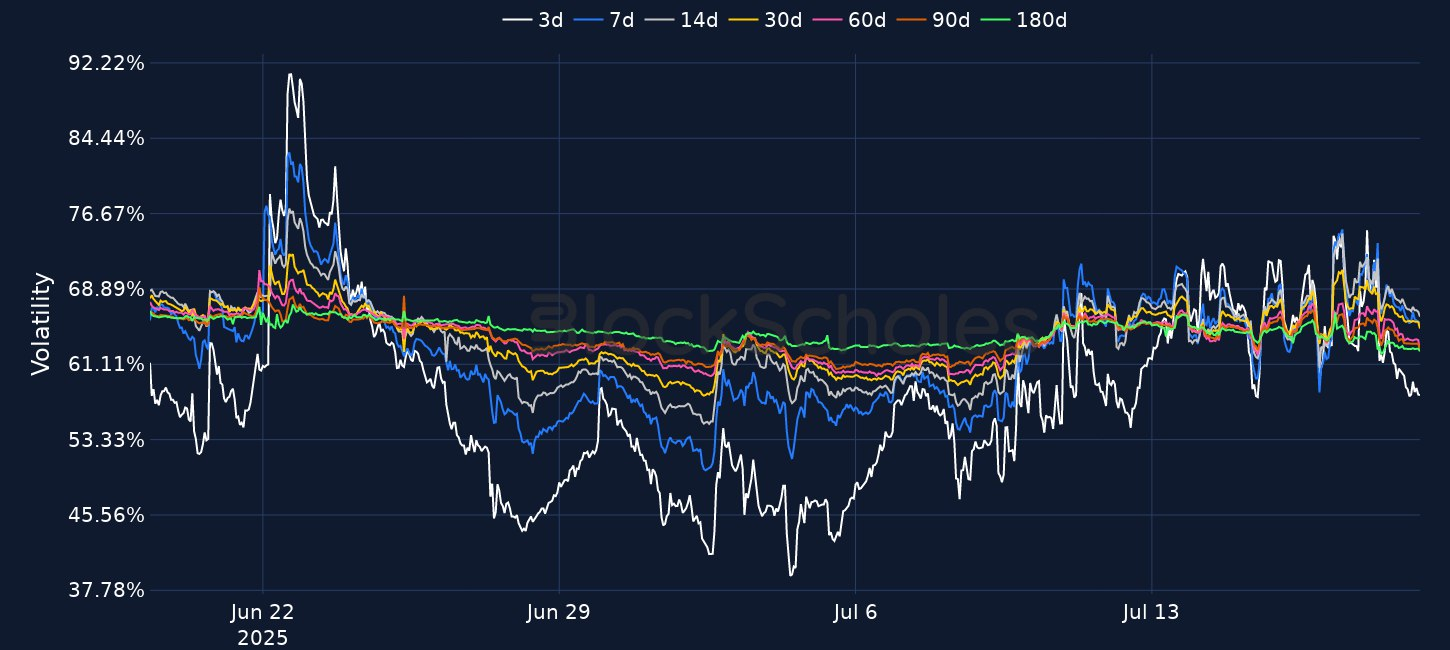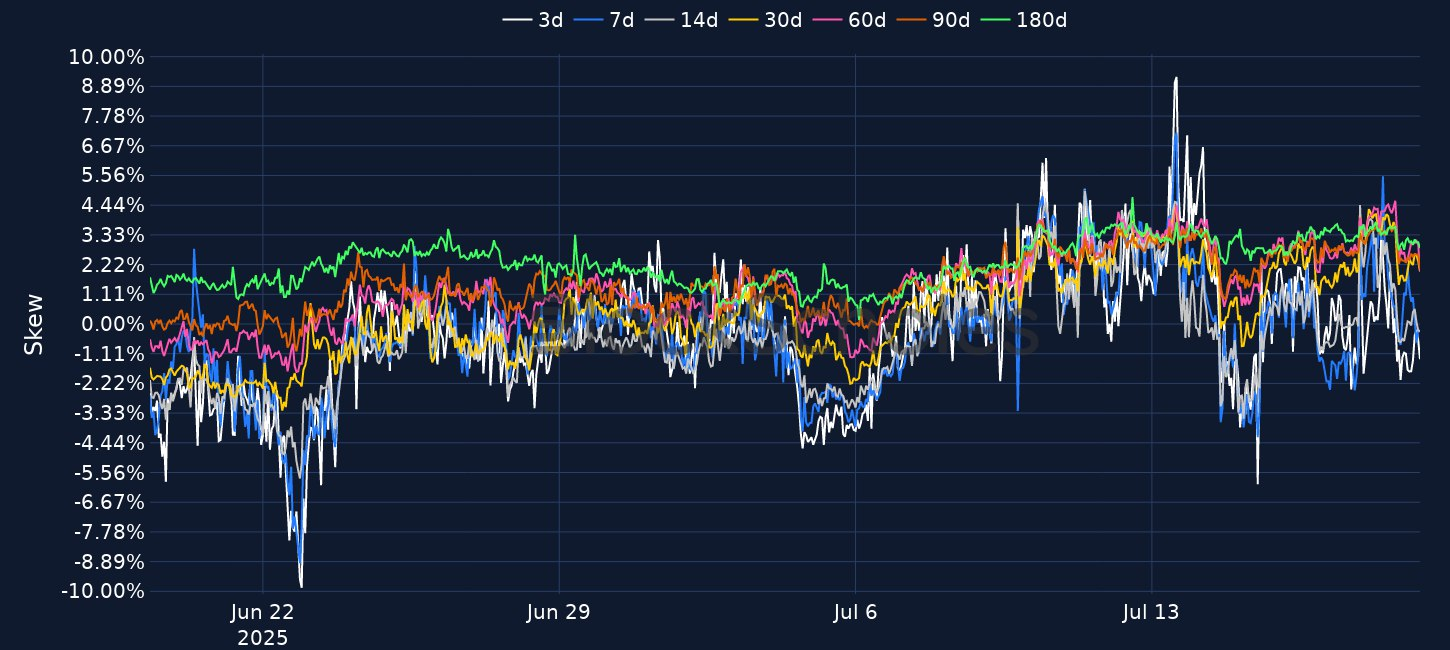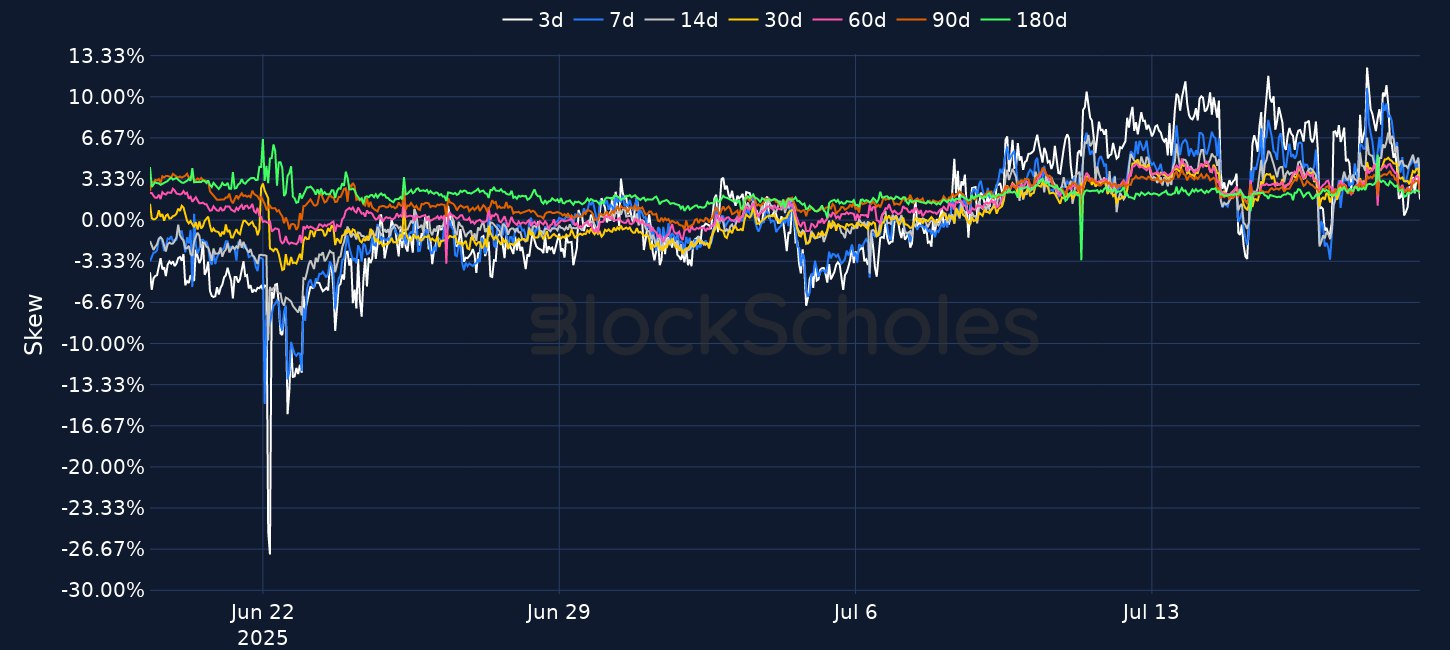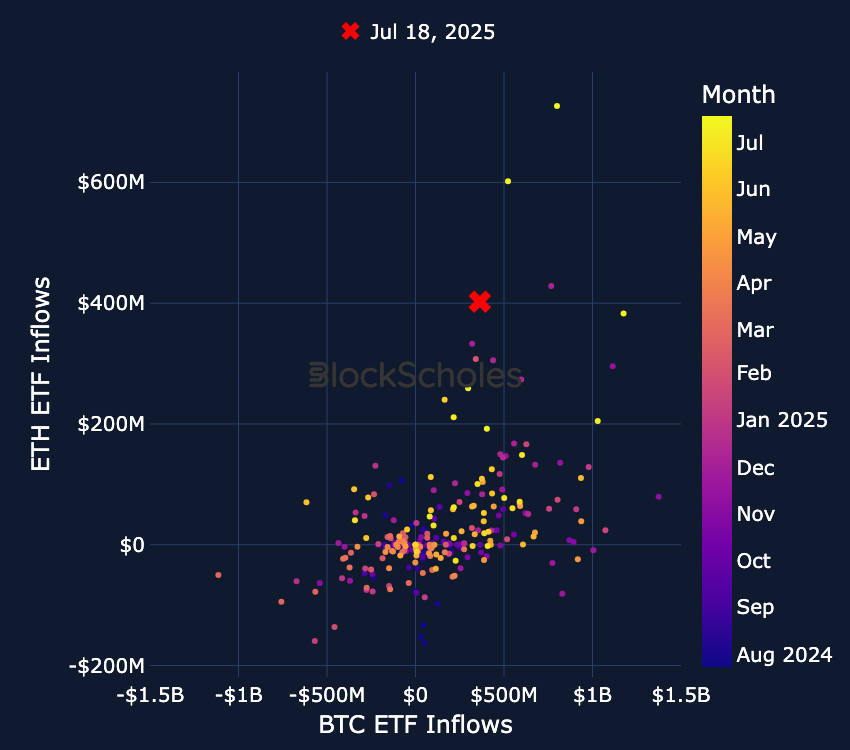“They Named it After Me”
President Trump officially signed the GENIUS Act into law, stating that it will “increase demand for US treasuries, lower interest rates and “secure the dollar’s status as the world’s reserve currency”. Crypto markets have taken a slight breather currently, after reaching a market cap of $4T for the first time ever. Advancements in "Crypto Week" did not just end with the GENIUS Act either; the CLARITY Act has advanced through the House and is set for debate in the Senate, while SEC Chair Paul Atkins has hinted at "regulatory exceptions" to support tokenisation. Payment tokens such as XRP, HBAR and XLM have outperformed over the past month, boosted by the regulatory momentum in the GENIUS Act.

Daily Updates:
“The GENIUS Act. They named it after me and I want to thank you. This is a hell of an Act” – President Trump
- In July 2024, President Trump promised to make the US the “crypto capital of the planet”. In March 2025, during the Blockworks Digital Asset Summit, he called on Congress “to pass landmark legislation creating simple, common sense rules for stablecoins”.
- Yesterday evening the President held a signing ceremony where he officially signed that “common sense” legislation, the GENIUS Act into law, hailing it as a “giant step to cement American dominance of global finance and crypto technology”.
- Below are some of the key takeaways from the GENIUS Act, and their potential implications; readers can find our deep dive on the US regulatory landscape and in other jurisdictions here.
- President Trump and his administration have not been shy in their goal of lower treasury yields. The pursuit towards lower borrowing costs has been amplified further given the estimated budget deficit increase of $2.6T from 2025 to 2034 as a result of the recently passed “big, beautiful” bill. By legislating stablecoin issuers to maintain reserves backing their stablecoins “on an at least 1 to 1 basis” with “United States coins and currency”, bank deposits, deposits held at a Federal Reserve bank and “Treasury bills, notes or bonds with a remaining maturity of 93 days or less”, Trump has opened the way forward for an onslaught of new marginal buyers of US treasuries.
- The GENIUS Act allows for both bank and non-bank entities to issue stablecoins – we covered what that might mean for large blockchains, such as Ethereum here. One of the key takeaways is that the Ethereum network could become “significantly deflationary" should the market cap of stablecoins increase to levels projected by the likes of Scott Bessent (assuming more than 50% of that volume stays on Ethereum, as is currently the case).
- A key provision in the GENIUS Act prohibits stablecoin providers from offering yield or interest to stablecoin holders – that opens the possibility for banks issuing their own stablecoins to engage in the same business model that has made Tether (the company behind USDT) over $1B in operating profit in Q1 2025.
- Protection for holders – in the event of an issuer’s bankruptcy, stablecoin holders have a priority claim even ahead of the issuer themselves.
- During the ceremony Trump said that the GENIUS Act will “increase demand for US treasuries, lower interest rates and “secure the dollar’s status as the world’s reserve currency” – losing that position would be “like losing a world war”. He added that it “could be perhaps the greatest revolution in financial technology since the birth of the internet itself”.
- The total market cap of the entire crypto industry, as measured by CoinGecko, surged past $4T for the first time in history, as altcoins across the board rallied amidst the regulatory momentum.
- BTC and ETH Spot ETFs ended the week yesterday with another major day of positive inflows. The former saw investors purchase $363.5M worth of bitcoins, while the latter saw inflows of $402.5M. As seen in the ‘Charts of the Day’, in July we have seen several days where ETH ETFs have outperformed or almost matched inflows of BTC ETF products – something which has otherwise been rare since their respective launches.
- We made the case for why BTC and crypto assets stood to benefit from regulatory friendliness at the beginning of the year:
“We are of the view that the short-term macro headwinds will not detract from a longer-term more positive outlook driven by the two other major tailwinds in Bitcoin’s direction: namely idiosyncratic supply and demand factors which have driven previous cycles and are unique to Bitcoin, as well as a pro-crypto regulatory landscape which will open the floodgates for more crypto activity.”
- “Crypto Week” did not just end with a success for the GENIUS Act alone either. On Thursday, the House passed the CLARITY Act, a broader market structure bill for crypto assets, with the bill now set for debate in the Senate.
- Additionally, on Thursday the Chairman of the SEC, Paul Atkins, said that SEC staff are “considering what other changes may be appropriate to incentivise tokenisation” within their regulatory framework, “including an innovation exception that would permit novel ways of trading and more narrowly tailored forms of relief to facilitate the building of other components of a tokenized securities ecosystem”.
- A number of financial institutions have made plans towards or already launched tokenised equities, enabling 24-7 trading of traditional stock assets, though has received some backlash.
- Atkins said “It’s hard to say exactly where things will go or what will happen, but, you know, assets clearly are moving on chain. So if it can be tokenised, it will be tokenised”.
- For now crypto markets are taking a slight breather – BTC is slightly lower on the day, consolidating at $118,000 while ETH is currently sideways at $3,500.
- That pullback has seen a drop in the volatility premium of short-tenor out-of-the-money BTC call options, relative to put options with the same expiries, however not enough to shift towards a put-skew. Volatility smiles across tenors for BTC are currently neutral-to-bullish.
- Similarly, volatility smiles for ETH are less strongly skewed towards calls than they were yesterday and ETH’s term structure of volatility is currently compressed.
- Among the top 10 tokens by market capitalisation, it is only XRP and DOGE that are trading higher. XRP reached a new all-time high of $3.66 yesterday – bolstered by developments in the GENIUS Act, considering its focus on cross-border transactions via its global payment system RippleNet (our deep dive on the XRP token, the Ripple blockchain and its payment system can be found here). Payment-related tokens in particular have outperformed over the past month. Tokens such as XRP, ALGO, HBAR, and XLM are all up 60-85% in the last 30 days. That’s a significant outperformance compared to other non-payment related layer-1 blockchains or ecosystems – for example, SUI is up by a smaller 36% in the past month, or Hyperliquid which is up 14%.
This Week’s Calendar:
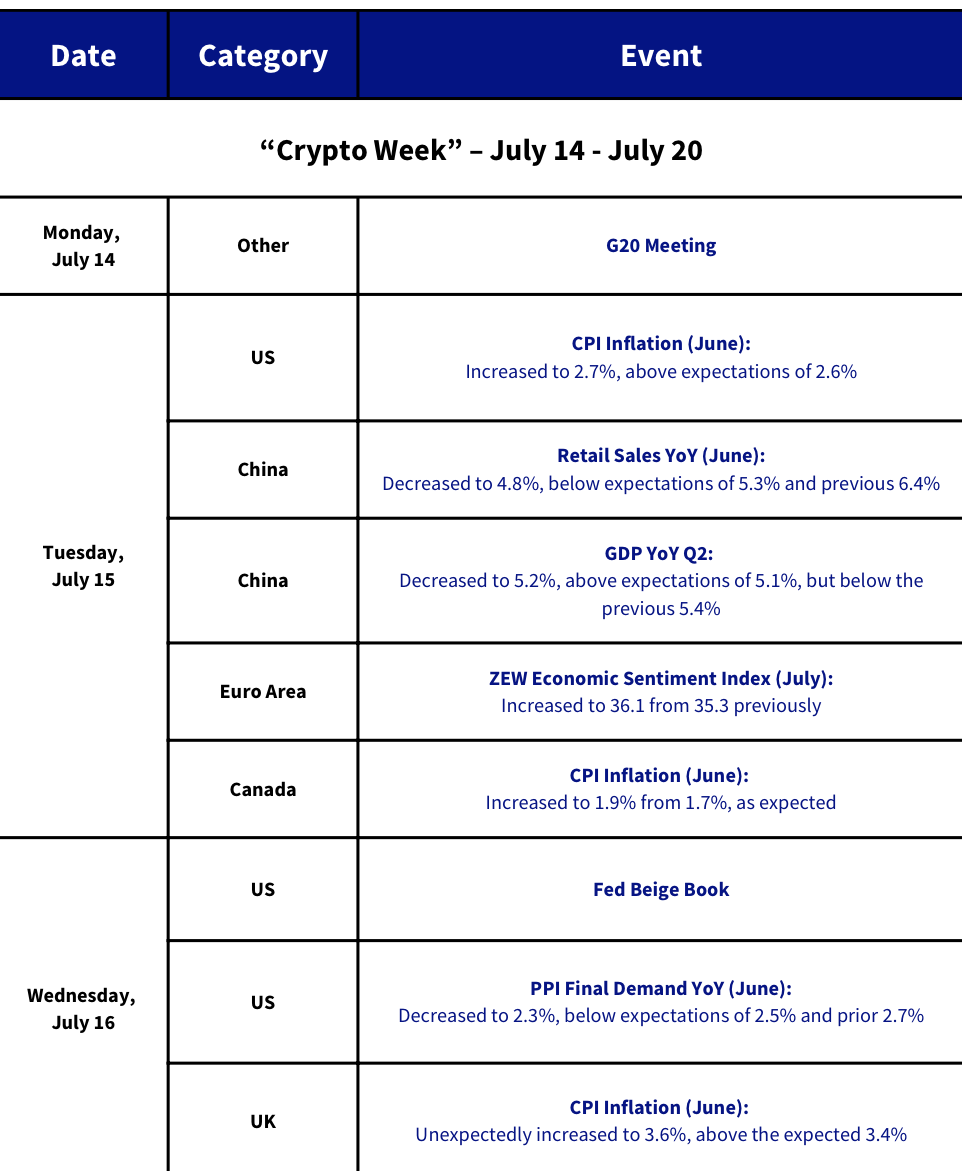
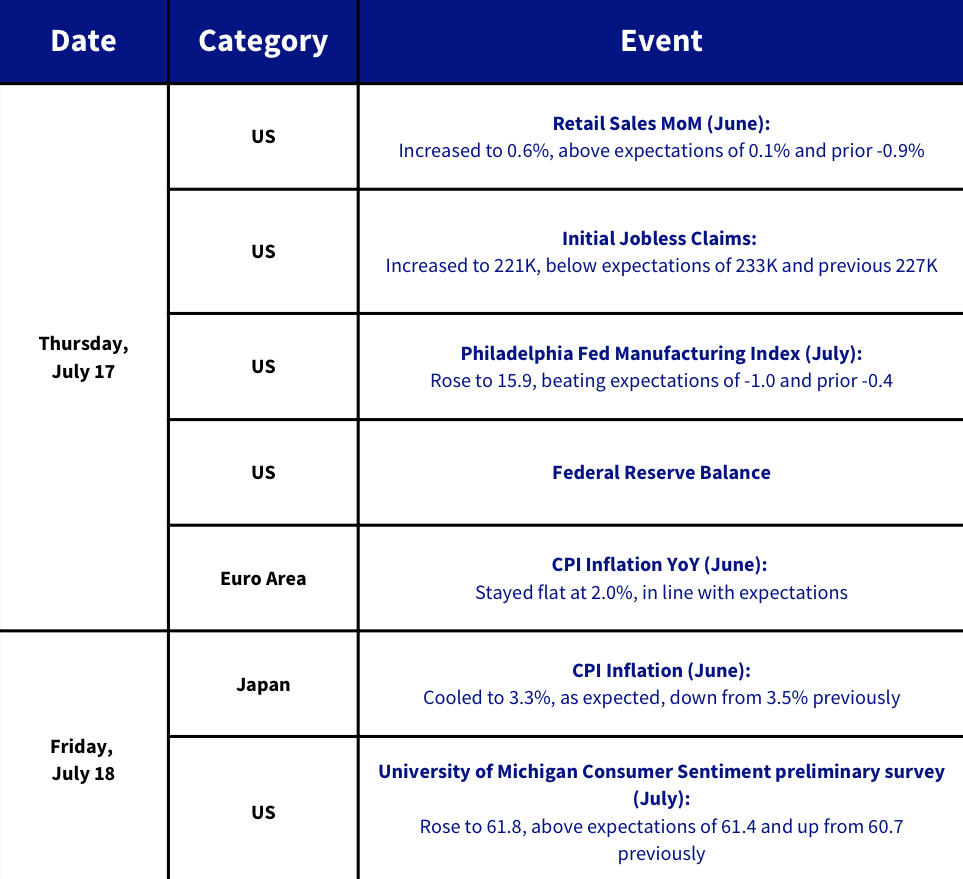
Charts of the Day:

